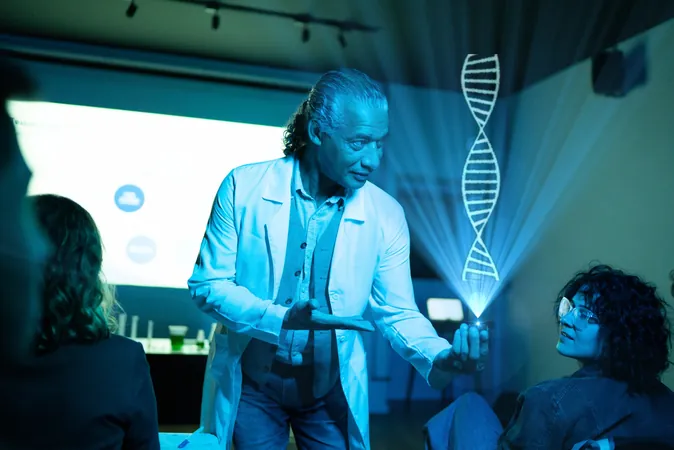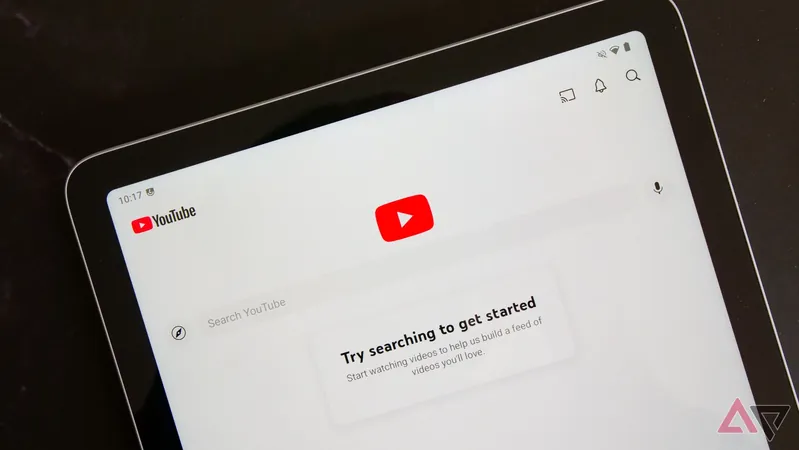
Unlocking the Mysteries of Life: The Arc Virtual Cell Atlas Is Here!
2025-04-28
Author: Arjun
Revolutionizing Biology with the Virtual Cell Atlas
Imagine a universe where billions of biomolecules interact in a symphony of chemical reactions, all within a single cell. This once sci-fi concept is now inching closer to reality, thanks to the groundbreaking collaboration between the Arc Institute, 10x Genomics, and Ultima Genomics. Together, they’re spearheading the development of the Arc Virtual Cell Atlas, a revolutionary resource set to redefine how we understand biology and medicine.
A New Era of Science Collaboration
Recalling echoes of the pioneering Human Genome Project, this initiative aims to gather a staggering repository of single-cell data. Patrick Hsu, co-founder of the Arc Institute, emphasizes the significance of collaboration: "This isn't merely about individual projects—it's about forging a broader scientific community to tackle questions that felt insurmountable just months ago."
Rapid Expansion of the Virtual Cell Atlas
Just two months post-launch, the Arc Virtual Cell Atlas has soared past 400 million cells and continues to grow, promising unprecedented advancements in biomedical research and drug discovery. This ambitious atlas aims to transform scientific understanding and ignite rapid innovation.
The Fascinating Concept of the ‘Virtual Cell’
What exactly is a virtual cell? More than a buzzword, it’s a game-changing approach to biology. Hsu describes it as a system that uses AI to simulate and predict cellular responses, vastly accelerating research capabilities. This transformation speaks to a new paradigm where biological understanding moves from slow, traditional experiments to rapid computational simulations.
Navigating the Complexity of Cells
Cells are intricate factories of life, and their diversity, even within a single organism, is astounding. Research now indicates that we may have over 400 unique human cell types. This diversity not only challenges our understanding but also opens a treasure trove of discovery opportunities. Hsu explains that by integrating various biological data—like DNA and proteins—we can create advanced models to explore cellular behavior.
Perturbation: A Key to Understanding Cells
To unlock the secrets of cellular behaviors, the concept of 'perturbation' becomes essential. By varying conditions in which cells exist, researchers can unveil the vast possibilities within cellular states. Hsu believes producing high-quality perturbational data is critical for training machine-learning models that accurately predict and manipulate cellular behavior.
The Need for Scale in Data Acquisition
At the heart of the virtual cell endeavor is the sheer demand for biological data. Gilad Almogy, CEO of Ultima Genomics, likens the necessity of such data to Moore’s Law, predicting an insatiable appetite for biological insights. The mission? To digitize biological processes at scale.
AI: The Glue That Binds It All
Developing the Arc Virtual Cell Atlas not only relies on gathering vast datasets but also on applying AI to interpret this data. According to Serge Saxonov, CEO of 10x Genomics, we are entering an exciting juncture where data acquisition, AI, and biological research converge, setting the stage for monumental breakthroughs in precision medicine.
Revolutionizing Drug Discovery
One of the most thrilling implications of the virtual cell is its potential to transform drug discovery. Hsu notes that by simulating biological experiments, researchers can significantly cut down the time required for drug development. This advancement can be crucial for tackling complex diseases like cancer, where understanding immune cell behavior is vital.
Who Truly Represents the Virtual Cell?
As the Arc Virtual Cell Atlas continues to develop its expansive datasets, it challenges us to think about representation in the virtual cell. Should it encompass a universal collection that reflects global diversity, starting from primary cells to broaden our biological understanding?
Imagining a Sci-Fi Future for Biology
As we stand on the brink of this remarkable scientific breakthrough, it’s hard not to envision a future where we can visually interact with cells, manipulating their genetic codes like a hologram. This dream of a tangible, responsive cellular universe could soon shift from fantasy to reality.


 Brasil (PT)
Brasil (PT)
 Canada (EN)
Canada (EN)
 Chile (ES)
Chile (ES)
 Česko (CS)
Česko (CS)
 대한민국 (KO)
대한민국 (KO)
 España (ES)
España (ES)
 France (FR)
France (FR)
 Hong Kong (EN)
Hong Kong (EN)
 Italia (IT)
Italia (IT)
 日本 (JA)
日本 (JA)
 Magyarország (HU)
Magyarország (HU)
 Norge (NO)
Norge (NO)
 Polska (PL)
Polska (PL)
 Schweiz (DE)
Schweiz (DE)
 Singapore (EN)
Singapore (EN)
 Sverige (SV)
Sverige (SV)
 Suomi (FI)
Suomi (FI)
 Türkiye (TR)
Türkiye (TR)
 الإمارات العربية المتحدة (AR)
الإمارات العربية المتحدة (AR)